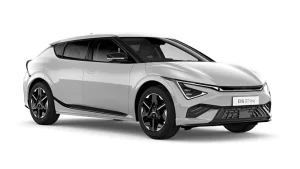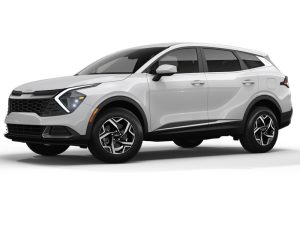Spain, with its beautiful coastal roads, scenic routes through mountainous regions, and bustling cities, is a popular destination for tourists and business travelers alike. When leasing a vehicle in Spain, however, it’s crucial to be aware of the country’s driving regulations to ensure a safe and legally compliant experience. Understanding these rules will help you avoid fines and make the most of your journey.
1. Documentation Required for Driving a Leased Vehicle in Spain
Before getting behind the wheel of a leased vehicle in Spain, ensure that you have all the necessary documentation. The following are the essential documents you need to carry:
- Valid Driver’s License: Drivers from EU countries can use their home country license, while non-EU residents may need an International Driving Permit (IDP) alongside their national license.
- Vehicle Leasing Agreement: Keep a copy of your lease agreement, which shows you have permission to drive the vehicle.
- Insurance Documentation: Leased vehicles must have the proper insurance documents, including proof of coverage for liability, accident, or theft.
- Vehicle Registration Certificate (Permiso de Circulación): This proves that the vehicle is legally registered in Spain.
- Passport or ID: Carry identification to confirm your identity if required by authorities.
2. Basic Traffic Rules and Regulations
Understanding and following the basic driving rules in Spain will prevent you from running into trouble with traffic authorities.
Driving on the Right: Spain follows right-hand traffic, and overtaking is only allowed on the left.
Mandatory Seatbelt Use: All passengers, including those in the back seat, are required to wear seatbelts.
Speed Limits: The general speed limits in Spain are:
- Urban areas: 50 km/h
- Rural roads: 90 km/h
- Motorways: 120 km/h
Drunk Driving Limits: The legal blood alcohol limit is 0.05% (0.5 g/l). For drivers with less than two years of experience, the limit is 0.03% (0.3 g/l).
Mobile Phone Usage: It is illegal to use a mobile phone while driving unless you have a hands-free system.
Daytime Headlights: Headlights are mandatory on certain roads during bad weather, and motorcycles must always use them.
Violation of these rules can lead to fines ranging from €100 to €600 or even license suspension, so vigilance is crucial.
3. Parking Rules and Restrictions
Parking regulations in Spain vary by city, but the following general guidelines apply:
- Blue Zones (Zona Azul): These are paid parking areas marked by blue lines on the pavement. You’ll need to purchase a ticket from a nearby machine and display it on your dashboard.
- White Zones: Free parking is often allowed in areas marked with white lines, but be sure to check for signage to confirm.
- Yellow Lines: Parking in areas marked with yellow lines is strictly prohibited.
- Green Zones (Zona Verde): These are typically reserved for local residents. Non-residents can park here for a limited time and may need a special permit.
- Underground Parking Garages: In cities like Madrid and Barcelona, parking garages are a safe and convenient option but can be expensive.
Illegal parking can result in fines and even towing, so ensure you park in designated zones.
4. Road Signs and Their Importance
Road signs in Spain adhere to international standards, but there are a few that you should be particularly aware of:
- Ceda el Paso (Give Way): This triangular sign means you must yield to traffic.
- Prohibido el Paso: Indicates no entry.
- No Adelantar: No overtaking is allowed.
- Velocidad Máxima: Indicates the maximum speed limit.
Failure to adhere to road signs can lead to fines, so pay close attention, especially when driving in unfamiliar areas.
5. Toll Roads and Payment Methods
Spain has an extensive network of toll roads, known as “Autopistas de Peaje.” These roads are marked with an “AP” prefix, such as AP-7 along the Mediterranean coast. Toll rates vary depending on the distance traveled, vehicle type, and region.
- Payment Methods: You can pay tolls using cash, debit/credit cards, or electronic devices like the “Telepeaje” or “VIA-T” tag, which allows for automatic toll payment.
- Toll-Free Alternatives: If you want to save money, consider using secondary roads (“Carreteras Nacionales”), but be prepared for slower travel.
6. Fueling and Emission Zones
Spain has a well-developed network of gas stations, with options for gasoline (gasolina) and diesel (gasoil). Gas stations are plentiful along highways, but in rural areas, they may be sparse.
Additionally, many cities in Spain, including Madrid and Barcelona, have established low-emission zones to reduce pollution. Vehicles must comply with emission standards, and non-compliant vehicles may face fines or restrictions.
- Eco-Sticker Requirements: Depending on your vehicle type and lease duration, you may need an eco-sticker indicating the emission classification of the car. Confirm this with your leasing company.
7. Insurance Requirements and Coverage
When leasing a vehicle in Spain, insurance is mandatory. Your leasing company typically provides the necessary insurance coverage, but it’s important to verify the extent of coverage included in your agreement.
Types of Insurance Coverage:
- Liability Insurance: Covers damage caused to third parties.
- Comprehensive Insurance: Covers damage to the vehicle from accidents, vandalism, or natural disasters.
- Theft Protection: Covers loss due to theft.
Make sure to read the terms of the insurance policy carefully and clarify whether you are covered for off-road driving or international travel.
8. Fines and Penalties
Spain has a strict system of fines for traffic violations. Common infractions include:
- Speeding: Fines range from €100 to €600, depending on how much the speed limit is exceeded.
- Illegal Parking: Fines range from €80 to €200.
- Drunk Driving: Severe penalties include fines, license suspension, and even imprisonment in extreme cases.
- Failure to Wear a Seatbelt: Fines start at €200.
Foreign drivers may be required to pay fines on the spot. Some rental or leasing companies may even deduct fines from your credit card if the authorities notify them.
9. Emergency Situations and Roadside Assistance
If you encounter an emergency while driving a leased vehicle in Spain, follow these steps:
- Move to a Safe Location: If possible, move your vehicle off the road.
- Use Warning Triangles: Place them 50 meters behind the vehicle to alert other drivers.
- Wear a Reflective Vest: This is mandatory when exiting the vehicle on highways.
- Contact Emergency Services: Call 112 for immediate help.
Most leasing companies offer roadside assistance, so keep their contact number handy.
10. Returning the Leased Vehicle
Before returning the leased vehicle, ensure the following:
- The fuel tank is filled as per the leasing agreement.
- The vehicle is clean and free of damage.
- You have removed all personal belongings.
Inspect the vehicle with a representative to document its condition, and ask for a receipt to confirm the return.
Final Thoughts
Driving a leased vehicle in Spain can be an enjoyable and convenient way to explore the country. However, complying with the local driving regulations is key to avoiding fines and ensuring a safe journey. Always keep your documents in order, observe traffic rules, and stay informed about specific regional requirements. By following these guidelines, you can focus on making memories without worrying about legal complications.
Frequently Asked Questions (FAQs)
Do I need an International Driving Permit (IDP) to drive a leased vehicle in Spain?
If you are from a non-EU country, you’ll typically need an IDP along with your national driver’s license
What happens if I get a traffic fine while driving a leased car in Spain?
Traffic fines can be charged directly to your credit card by the leasing company if they receive a notification from the authorities
Are there toll-free alternatives to Spain’s toll roads?
Yes, you can use secondary roads (Carreteras Nacionales) for toll-free travel, though it may take longer
Is car insurance included with leased vehicles in Spain?
Most leased vehicles come with basic insurance, but you should confirm the extent of coverage with the leasing company
Are emission zone restrictions applicable to leased vehicles in Spanish cities?
Yes, many cities have low-emission zones. Ensure the leased vehicle complies with local regulations





